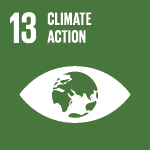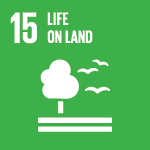Posted in: 05/27/2023
The Atlantic Forest Law , in force since 2006, has been fundamental for the preservation of the biome that once occupied 15% of the national territory , but today has only 12.4% of its extension well preserved.
The law regulates the protection of the forest and the use of its biodiversity and resources. In addition, it creates financial incentives to restore the Atlantic Forest, encourages donations to conservation projects, delimits the forest domain , prohibits deforestation and develops rules for economic exploitation .
But a Provisional Measure on the Atlantic Forest, edited in 2022 and approved by the Chamber of Deputies in March 2023 , generated great discussions between environmentalists and politicians. At the time, it was defined that landowners would have more time to adhere to the Environmental Regularization Program (PRA) and formalize their commitment to the regeneration of the Atlantic Forest.
In addition, the approved MP made room for the deforestation of primary vegetation – part of the forest that was not touched – and secondary – referring to areas that had human activity -, it did not require measures to compensate for deforestation outside the Permanent Preservation Areas ( APP) , among other actions that eased and hindered compliance with the Atlantic Forest Law.
As a way of combating the deforestation of the biome , the Senate approved the opposition to the passages included in the MP . Now, the text returns to the Chamber of Deputies and should be analyzed in the coming weeks.
Even with the application of the Atlantic Forest Law, the biome lost more than 48 thousand hectares , between the months of January and others of 2022, according to the bulletin of the Mata Atlântica Deforestation Alert System (SAD) , carried out by the SOS Foundation Atlantic forest.
In recent years, the area destined for agriculture has grown by 10.9 million hectares . In 1985, agriculture occupied 9.2% of the territory of the Atlantic Forest, but in 2021, this number grew to 17.6%. Forestry , on the other hand, advanced 3.7 million hectares, occupying 3.5% of the territory.
Furthermore, the Atlantic Forest is the biome with the highest number of endangered species . The Ecosystem Accounts survey , carried out by the Brazilian Institute of Geography and Statistics (IBGE), released in 2020, points out that almost 2000 species of animals and plants are at risk of extinction .
Formed by several ecosystems , the Atlantic Forest is considered a national heritage of great importance for the supply, regulation and production of water , climate balance and for the production of food, fibers, wood and oils.
There are active projects and initiatives in the 17 states where the Atlantic Forest is present, aimed at restoring the biome and its species. This has resulted in more than 74,000 hectares already restored , through non-governmental organizations, environmental services and agroforestry systems. A green light for continued conservation of the Atlantic Forest.


Sign up and receive our news.